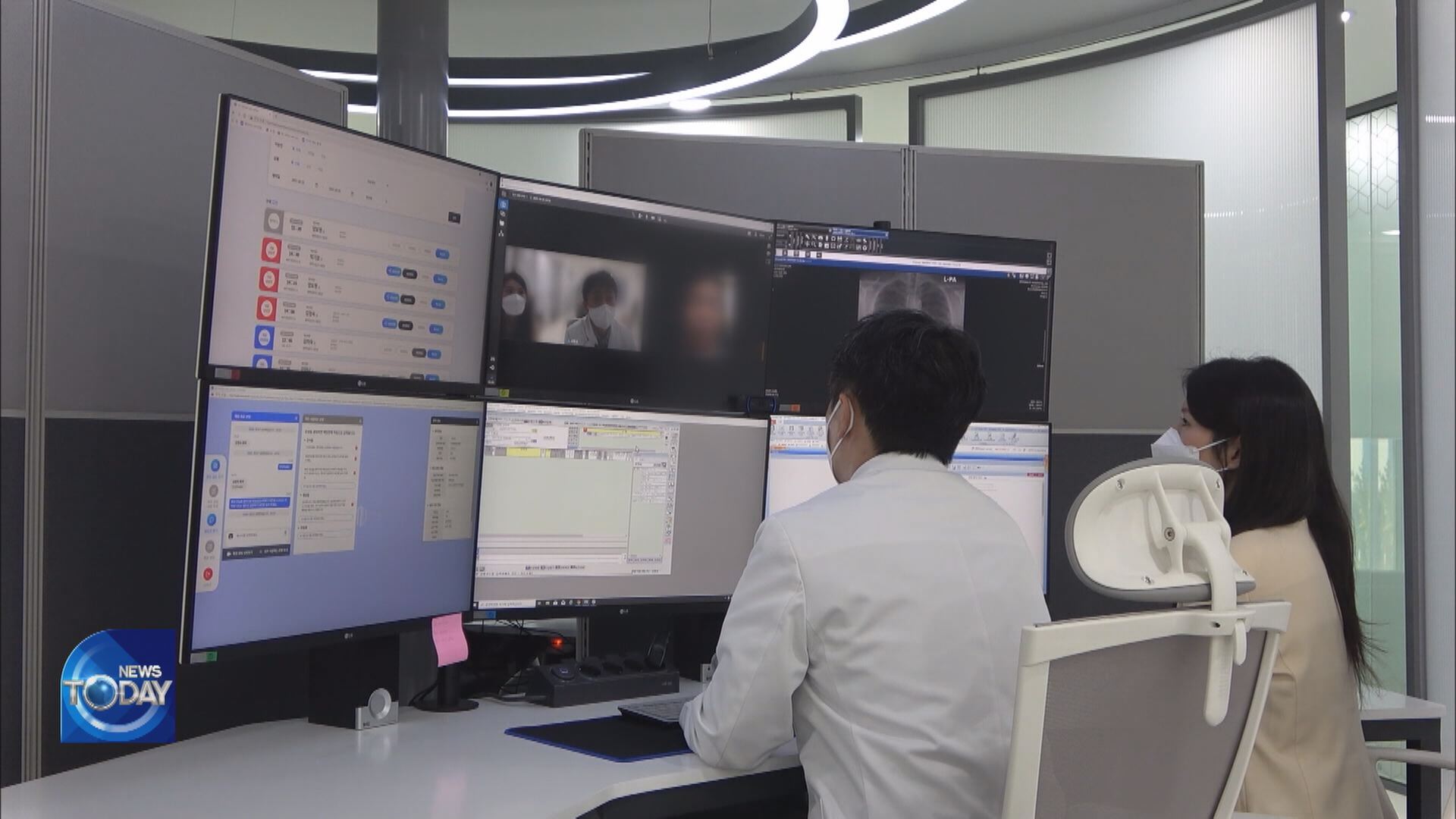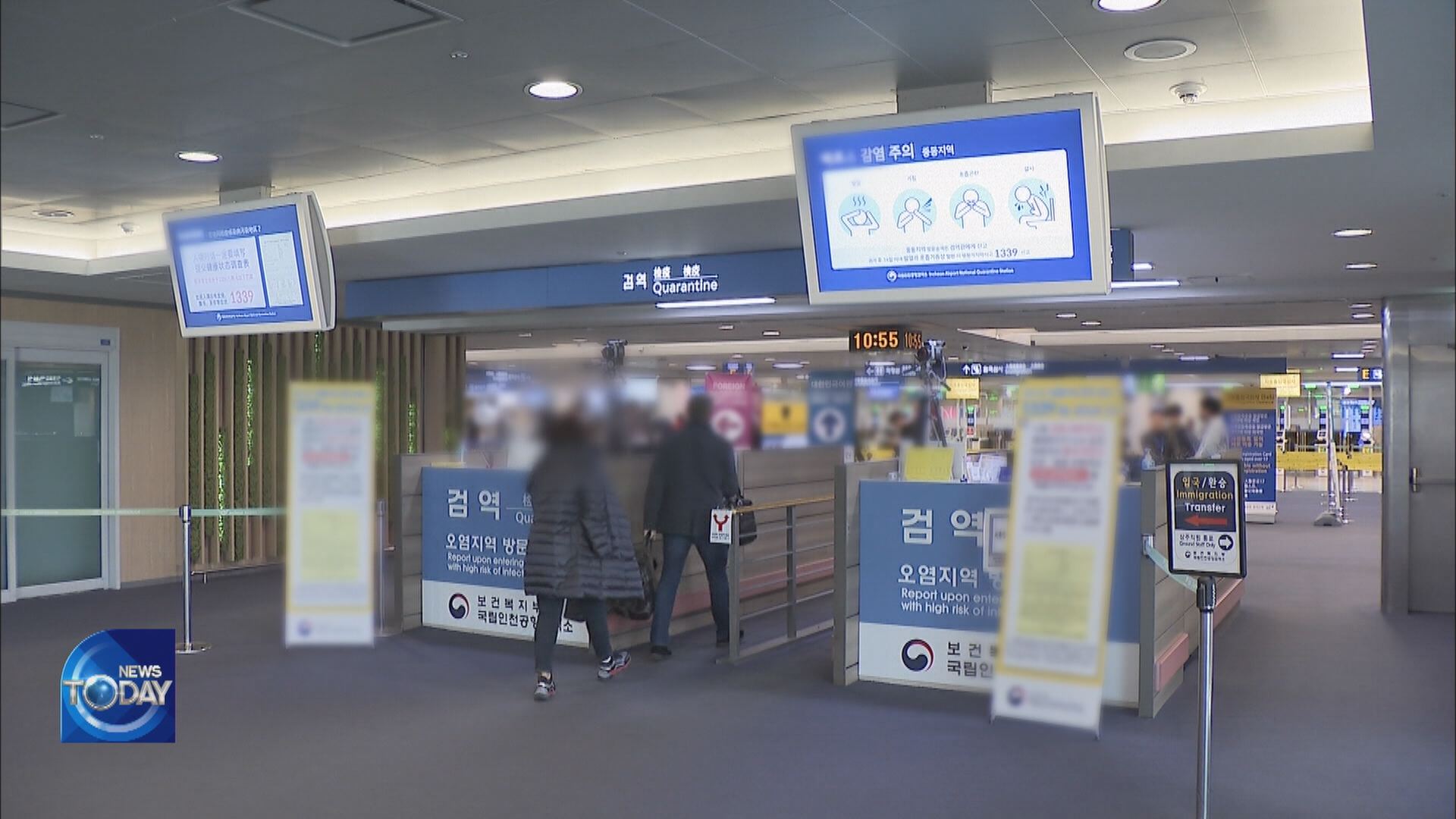AT-HOME TREATMENT ENFORCED
입력 2021.12.01 (15:22)
수정 2021.12.01 (16:46)
읽어주기 기능은 크롬기반의
브라우저에서만 사용하실 수 있습니다.
[Anchor Lead]
Critical COVID-19 cases have reached yet another new high of 723, while hospital bed capacity is approaching its limit. Recognizing the difficulty of adding more beds, the government has announced that at-home treatment will be the rule for COVID-19 patients. Currently some 97-hundred patients are being treated at home, but this figure is expected to sharply rise.
[Pkg]
COVID-19 patients quarantined at home will have to measure their temperature and oxygen saturation levels at least twice a day under government inspection.
[Soundbite] Park Hyang(Central Disasters Management HQs (KBS radio)) : "Partner hospitals will be designated and staff there will conduct monitoring such as around-the-clock emergency counseling."
Also, short-term outpatient treatment centers will open in each local district to serve at-home patients. Patients can receive treatment here including X-rays, CT scans and antibody medication. They can also be hospitalized but for no longer than 3 days. When leaving home for purposes such as visiting a hospital, patients must wear these protective gear: KF94 mask, face shield, gloves and a waterproof gown. When a patient feels chest pain or when a fever remedy does not work, he or she can be transferred to a hospital upon a doctor’s assessment. There has been a case where an at-home patient in his 60s died after reaching the hospital, so it’s imperative that a thorough diagnosis and swift transport system is established.
[Soundbite] Prof. Cheon Eun-mi(Ewha Womans Univ. Mokdong Hospital) : "Patients should be grouped by age, underlying ailments and risk level. But under a uniform at-home rule, I wonder what happens to the rest of patients and whether there’s a transport system for people developing serious symptoms at home."
Family members or cohabitants living with a patient are banned from going outside for 10 days. But exceptions will be allowed for essential reasons when it’s notified to local officials in charge beforehand. Going to work is also not possible and talks are under way to provide additional livelihood support funds. However if the economic loss is serious, checking into a proper treatment center can be an option. With at-home treatment being the principle now, family and civil servants will be caring for the patients instead of medical staff, which is bound to cause some confusion.
[Soundbite] Prof. Choi Won-suk(Korea Univ. Ansan Hospital) : "The biggest concern would be failing to notice patients developing into critical cases and alerts on hospital transport not being delivered in a timely manner."
The civic group People's Solidarity for Participatory Democracy criticized the latest measure as naive and irresponsible and demanded the government present ways to increase hospital beds and medical staff.
Critical COVID-19 cases have reached yet another new high of 723, while hospital bed capacity is approaching its limit. Recognizing the difficulty of adding more beds, the government has announced that at-home treatment will be the rule for COVID-19 patients. Currently some 97-hundred patients are being treated at home, but this figure is expected to sharply rise.
[Pkg]
COVID-19 patients quarantined at home will have to measure their temperature and oxygen saturation levels at least twice a day under government inspection.
[Soundbite] Park Hyang(Central Disasters Management HQs (KBS radio)) : "Partner hospitals will be designated and staff there will conduct monitoring such as around-the-clock emergency counseling."
Also, short-term outpatient treatment centers will open in each local district to serve at-home patients. Patients can receive treatment here including X-rays, CT scans and antibody medication. They can also be hospitalized but for no longer than 3 days. When leaving home for purposes such as visiting a hospital, patients must wear these protective gear: KF94 mask, face shield, gloves and a waterproof gown. When a patient feels chest pain or when a fever remedy does not work, he or she can be transferred to a hospital upon a doctor’s assessment. There has been a case where an at-home patient in his 60s died after reaching the hospital, so it’s imperative that a thorough diagnosis and swift transport system is established.
[Soundbite] Prof. Cheon Eun-mi(Ewha Womans Univ. Mokdong Hospital) : "Patients should be grouped by age, underlying ailments and risk level. But under a uniform at-home rule, I wonder what happens to the rest of patients and whether there’s a transport system for people developing serious symptoms at home."
Family members or cohabitants living with a patient are banned from going outside for 10 days. But exceptions will be allowed for essential reasons when it’s notified to local officials in charge beforehand. Going to work is also not possible and talks are under way to provide additional livelihood support funds. However if the economic loss is serious, checking into a proper treatment center can be an option. With at-home treatment being the principle now, family and civil servants will be caring for the patients instead of medical staff, which is bound to cause some confusion.
[Soundbite] Prof. Choi Won-suk(Korea Univ. Ansan Hospital) : "The biggest concern would be failing to notice patients developing into critical cases and alerts on hospital transport not being delivered in a timely manner."
The civic group People's Solidarity for Participatory Democracy criticized the latest measure as naive and irresponsible and demanded the government present ways to increase hospital beds and medical staff.
■ 제보하기
▷ 카카오톡 : 'KBS제보' 검색, 채널 추가
▷ 전화 : 02-781-1234, 4444
▷ 이메일 : kbs1234@kbs.co.kr
▷ 유튜브, 네이버, 카카오에서도 KBS뉴스를 구독해주세요!
- AT-HOME TREATMENT ENFORCED
-
- 입력 2021-12-01 15:22:26
- 수정2021-12-01 16:46:05

[Anchor Lead]
Critical COVID-19 cases have reached yet another new high of 723, while hospital bed capacity is approaching its limit. Recognizing the difficulty of adding more beds, the government has announced that at-home treatment will be the rule for COVID-19 patients. Currently some 97-hundred patients are being treated at home, but this figure is expected to sharply rise.
[Pkg]
COVID-19 patients quarantined at home will have to measure their temperature and oxygen saturation levels at least twice a day under government inspection.
[Soundbite] Park Hyang(Central Disasters Management HQs (KBS radio)) : "Partner hospitals will be designated and staff there will conduct monitoring such as around-the-clock emergency counseling."
Also, short-term outpatient treatment centers will open in each local district to serve at-home patients. Patients can receive treatment here including X-rays, CT scans and antibody medication. They can also be hospitalized but for no longer than 3 days. When leaving home for purposes such as visiting a hospital, patients must wear these protective gear: KF94 mask, face shield, gloves and a waterproof gown. When a patient feels chest pain or when a fever remedy does not work, he or she can be transferred to a hospital upon a doctor’s assessment. There has been a case where an at-home patient in his 60s died after reaching the hospital, so it’s imperative that a thorough diagnosis and swift transport system is established.
[Soundbite] Prof. Cheon Eun-mi(Ewha Womans Univ. Mokdong Hospital) : "Patients should be grouped by age, underlying ailments and risk level. But under a uniform at-home rule, I wonder what happens to the rest of patients and whether there’s a transport system for people developing serious symptoms at home."
Family members or cohabitants living with a patient are banned from going outside for 10 days. But exceptions will be allowed for essential reasons when it’s notified to local officials in charge beforehand. Going to work is also not possible and talks are under way to provide additional livelihood support funds. However if the economic loss is serious, checking into a proper treatment center can be an option. With at-home treatment being the principle now, family and civil servants will be caring for the patients instead of medical staff, which is bound to cause some confusion.
[Soundbite] Prof. Choi Won-suk(Korea Univ. Ansan Hospital) : "The biggest concern would be failing to notice patients developing into critical cases and alerts on hospital transport not being delivered in a timely manner."
The civic group People's Solidarity for Participatory Democracy criticized the latest measure as naive and irresponsible and demanded the government present ways to increase hospital beds and medical staff.
Critical COVID-19 cases have reached yet another new high of 723, while hospital bed capacity is approaching its limit. Recognizing the difficulty of adding more beds, the government has announced that at-home treatment will be the rule for COVID-19 patients. Currently some 97-hundred patients are being treated at home, but this figure is expected to sharply rise.
[Pkg]
COVID-19 patients quarantined at home will have to measure their temperature and oxygen saturation levels at least twice a day under government inspection.
[Soundbite] Park Hyang(Central Disasters Management HQs (KBS radio)) : "Partner hospitals will be designated and staff there will conduct monitoring such as around-the-clock emergency counseling."
Also, short-term outpatient treatment centers will open in each local district to serve at-home patients. Patients can receive treatment here including X-rays, CT scans and antibody medication. They can also be hospitalized but for no longer than 3 days. When leaving home for purposes such as visiting a hospital, patients must wear these protective gear: KF94 mask, face shield, gloves and a waterproof gown. When a patient feels chest pain or when a fever remedy does not work, he or she can be transferred to a hospital upon a doctor’s assessment. There has been a case where an at-home patient in his 60s died after reaching the hospital, so it’s imperative that a thorough diagnosis and swift transport system is established.
[Soundbite] Prof. Cheon Eun-mi(Ewha Womans Univ. Mokdong Hospital) : "Patients should be grouped by age, underlying ailments and risk level. But under a uniform at-home rule, I wonder what happens to the rest of patients and whether there’s a transport system for people developing serious symptoms at home."
Family members or cohabitants living with a patient are banned from going outside for 10 days. But exceptions will be allowed for essential reasons when it’s notified to local officials in charge beforehand. Going to work is also not possible and talks are under way to provide additional livelihood support funds. However if the economic loss is serious, checking into a proper treatment center can be an option. With at-home treatment being the principle now, family and civil servants will be caring for the patients instead of medical staff, which is bound to cause some confusion.
[Soundbite] Prof. Choi Won-suk(Korea Univ. Ansan Hospital) : "The biggest concern would be failing to notice patients developing into critical cases and alerts on hospital transport not being delivered in a timely manner."
The civic group People's Solidarity for Participatory Democracy criticized the latest measure as naive and irresponsible and demanded the government present ways to increase hospital beds and medical staff.
이 기사가 좋으셨다면
-
좋아요
0
-
응원해요
0
-
후속 원해요
0

















이 기사에 대한 의견을 남겨주세요.